Let’s Grow Stuff Interview: Lata and Tilak grow seeds of India in Eagle Heights Community Gardens
February 9, 2024 Leave a Comment
Greetings from the 2024 PBS Wisconsin Garden & Landscape Expo! It’s Sig, again, sharing a second conversation from my summer visiting Eagle Heights Community Gardens. As thousands of gardeners convene at the Alliant Center in Madison right now — exchanging knowledge and stories about growing food and flowers, serving as stewards of land and community — it’s a wonderful time to share my August 2023 visit with Madison’s Lata and Tilak Chandra.
Lata and Tilak, warm and generous Eagle Heights garden neighbors of our PBS Wisconsin Let’s Grow Stuff producers, gave me a tour of the lush, dense, and bountiful garden plot they’ve tended for 12 years on the sunny hillside in Madison’s Lakeshore Nature Preserve.
The Chandra’s, born and raised in the north of India — in the Indian state of Uttarakhand, in the town of Pithoragarh — have lived in the United States since 2000, raising two children, and planting material and spiritual seeds of India in their community garden.
Q: Tell us a little about yourselves and how you came to garden at Eagle Heights.
Lata: We moved from Montana to Madison in 2011, and we’ve had this garden plot since we arrived. Tilak’s background is as a chemistry researcher, and we initially came to the U.S. in 2000 so he could do a post doctorate in Bloomington, Indiana. Our first born was 18 months at the time. We then moved to Athens, Ohio where our second child was born and then on to Bozeman, Montana for four and a half years. We loved that area, especially Yellowstone. And then Tilak got a job at UW-Madison. He still works for the UW in environmental health and safety.
I have degrees in biology and chemistry, but ultimately turned to focus on raising my children, while at the same time learning that I love working with kids — so now I work full time with infants.
Q: Did you feel like experienced gardeners when you got started here?
Lata: We hadn’t done much gardening or farming — in India we didn’t — but my parents had a kitchen garden. We did a small amount of gardening while in Bozeman because they also had a community gardening opportunity, but it was when we got to Madison and moved into the Eagle Heights apartments that we really got excited about it.
We always look forward to spring and summer because of our garden plot. Every year during the growing season, we’ve come to the plot almost every day — even when the children were small, we’d have them plant something.
It’s like meditation for us. We’re often very tired when coming home from work, not feeling great, but when I come here I feel so energetic. It’s healing — we love this place.
Q: Can you give us a tour of what you’re growing?
Lata: Yes, of course! I’ll start with this plant — it’s called Tulsi, or “Holy Basil.” It’s related, but different from the basil you might be more familiar with in cooking. Tulsi is considered good for the spirit and is sometimes used as an herbal medicine. Because of its spiritual properties, many people keep it in their homes, even just outside the house. Every morning, I water my tulsi plant at home and, in the evening I light and offer up a clay diya in its presence — as a daily Hindu ritual and offering.
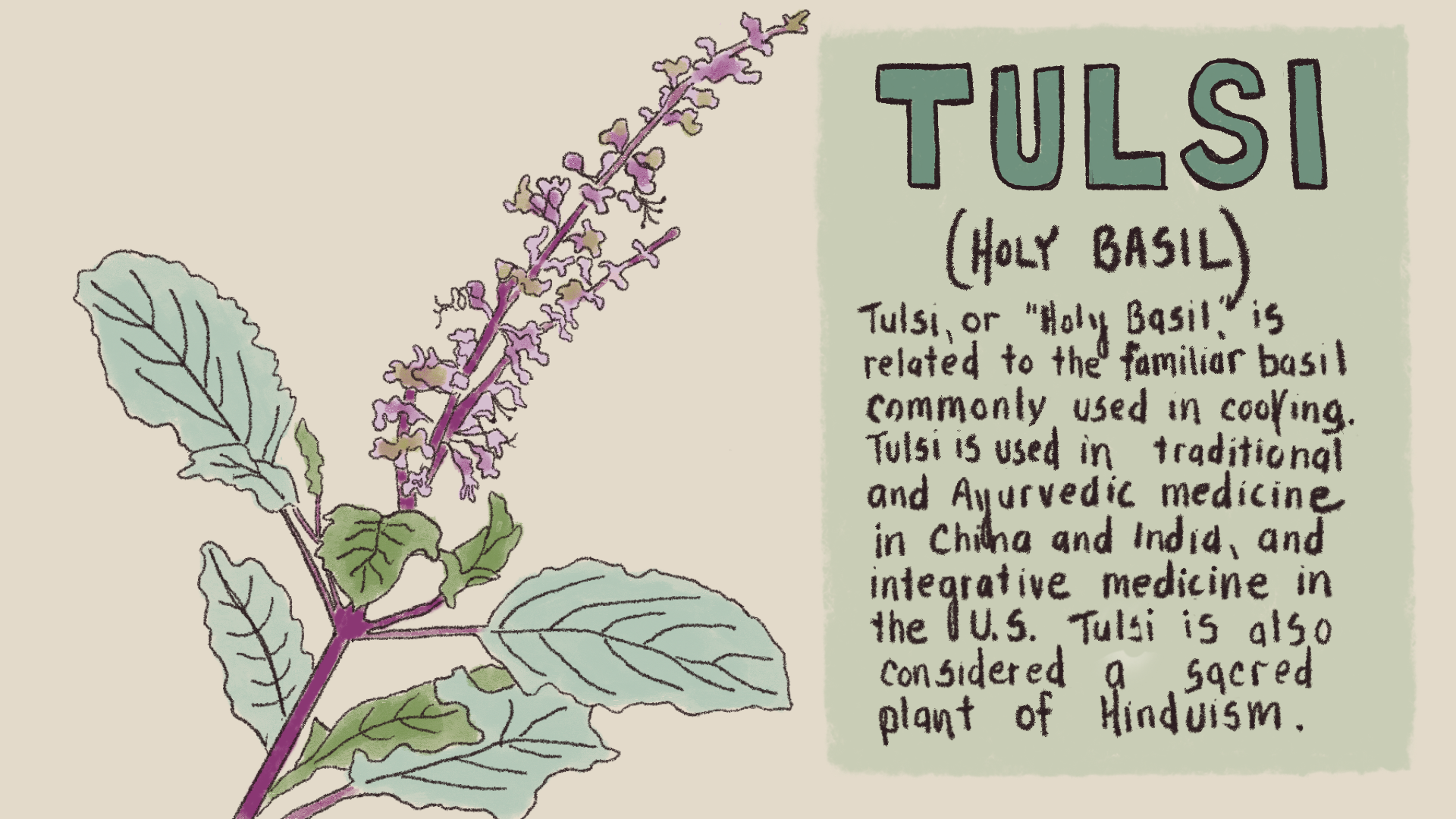
We have all different kinds of tomatoes and some of them are a variety of tomato seed from India. We order seeds online from a special retailer in New Jersey called Seeds of India.
We’re growing as well as saving seeds from our Karela or Bitter Gourd, also called “bitter melon.” The juice of bitter melon has been studied and found to be beneficial for diabetes. I am diabetic and so are my parents so we’ve eaten bitter melon for a long time.
We have Thai peppers which are very very hot! We use them in curry and I love to put them in green chutney. Our round eggplant is growing strong right now — the first time we succeeded in growing eggplant!
Spiny Gourd, here, is an Indian vegetable. It is the same family as Karela only not as bitter — it’s mildly bitter with a sweet aftertaste with a great texture. We also have Turai, or Ridge Gourd, which is full of fiber and we put it in curries a lot. It’s typically ready for eating around September.
Tilak: Lauki, or Bottle Gourd is my favorite. You can see here that they’re big. They taste like squash and you can make curry with them.
Lata: You can also make zucchini bread with Lauki — sweet, savory, whatever you want.
Bottle gourd is a very healthy vegetable, they say, keeping cholesterol down. It’s very easy to grow once the plant is established and it likes hot and humid weather.
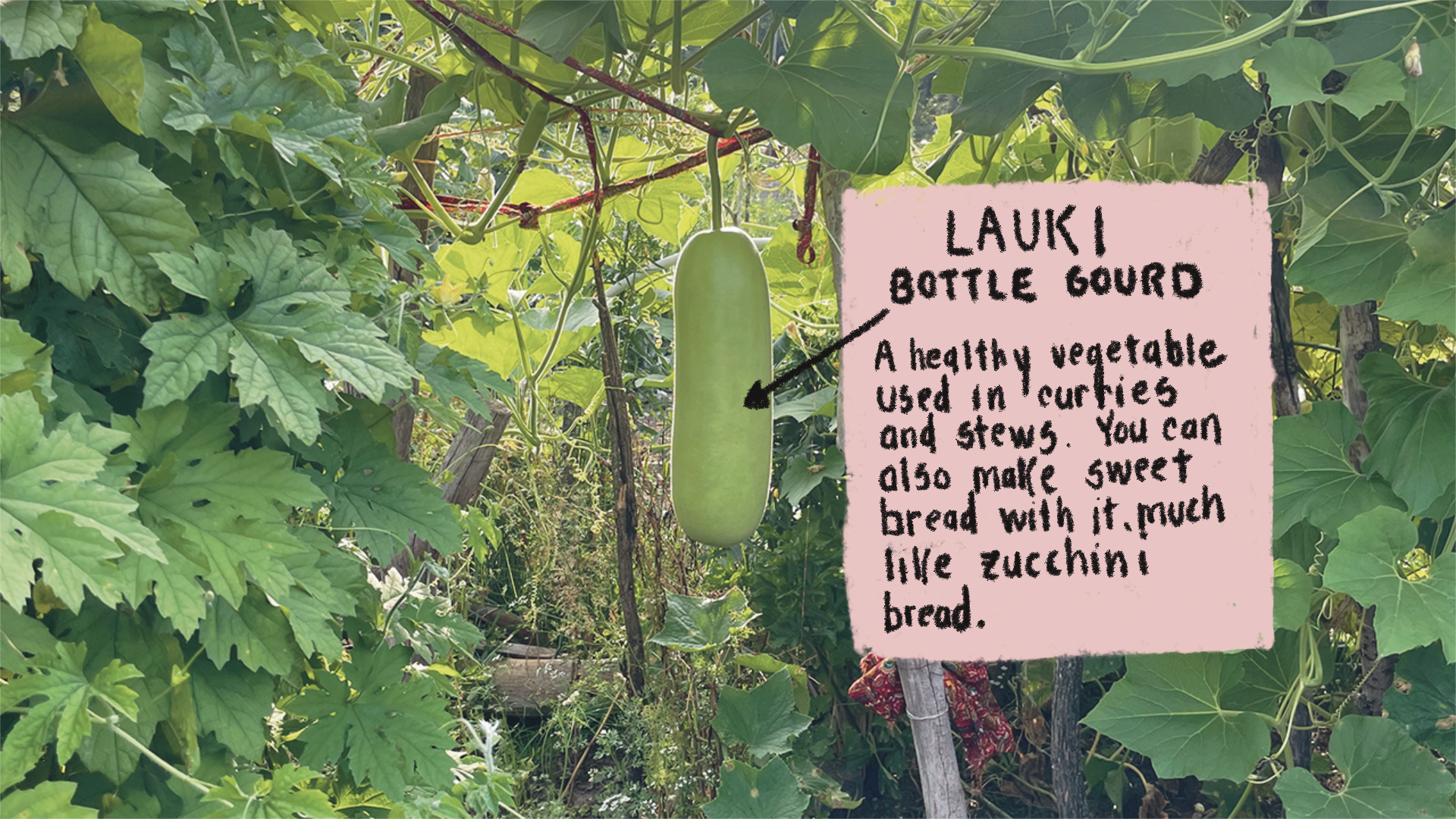
The garden is really full. Beyond all this we grew a lot of cilantro early in the season. You can see, here, cucumber, celery, climbing and bush beans, green peppers. And then I have marigolds here, I love marigolds because my parents had marigolds everywhere and it reminds me of childhood. I have them around our home, too.
Q: In what part of India were you raised?
Lata: So we are from the northern part of India.
Tilak: Our state is called Uttarakhand, about 10-12 hours north of New Delhi, and our town is called Pithoragarh — a small town.
Lata: It’s very pretty there, actually, near the mountains. My parents are still living there and doing well. Tilak’s mother is still with us. I have a sister who lives in southern India. Tilak has a bigger family with two older brothers and two older sisters.
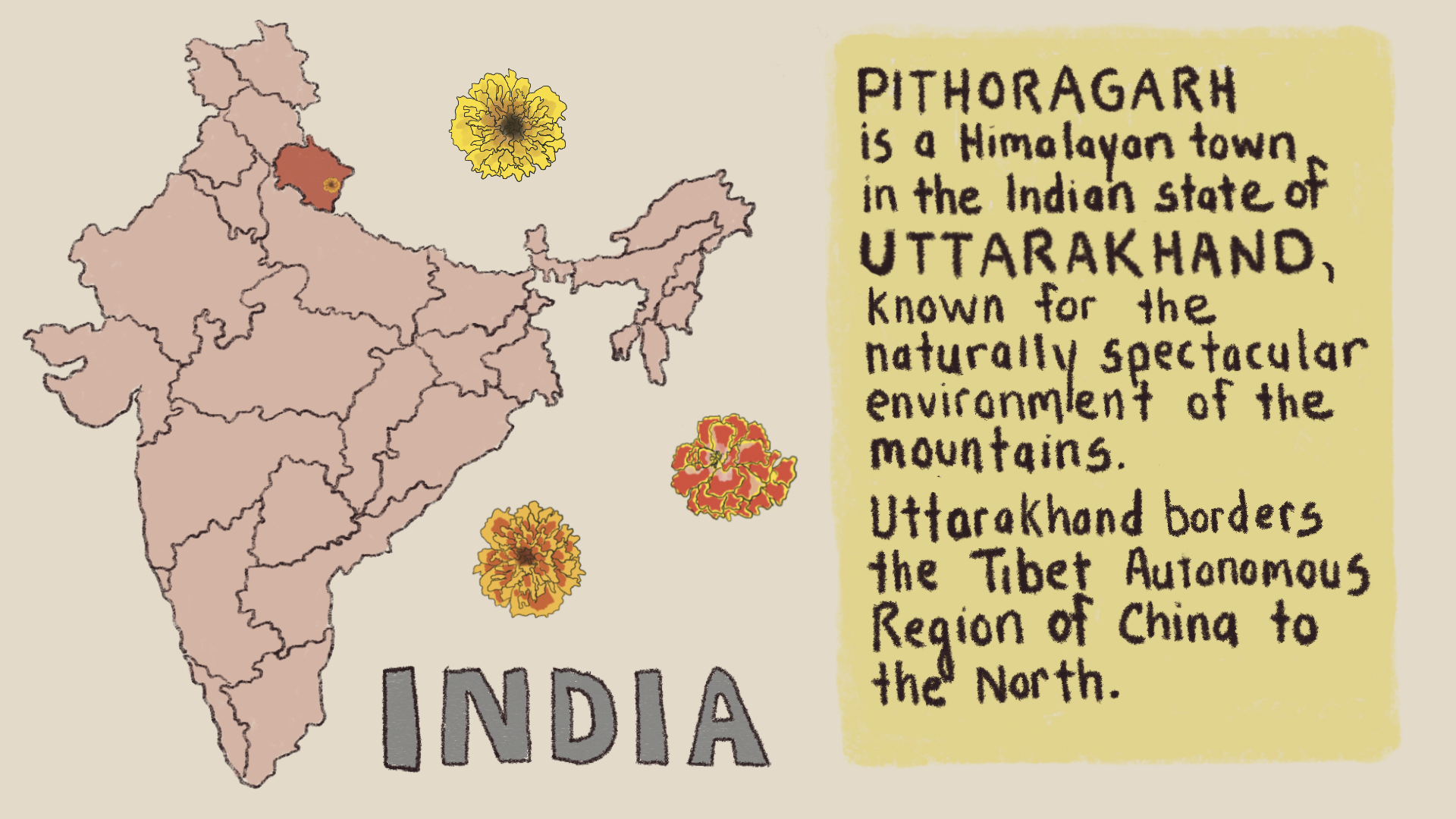
Q: What are some of your favorite parts of community gardening?
Lata: We love that we’ve met friends here. For example, one of our plot neighbors, she was here the first year we came, so we’ve known her for at least ten years. We’ve learned a lot of gardening tips from her. There’s a lovely sense of connection that you feel when you’re here and gardeners around you are all working. And simply being in this atmosphere — like on a clear evening when it’s breezy — it’s just perfect. The sharing, and the ritual of each part of the growing season from preparing to planting to tending to putting the garden to rest in the autumn, is a comfort and a joy.
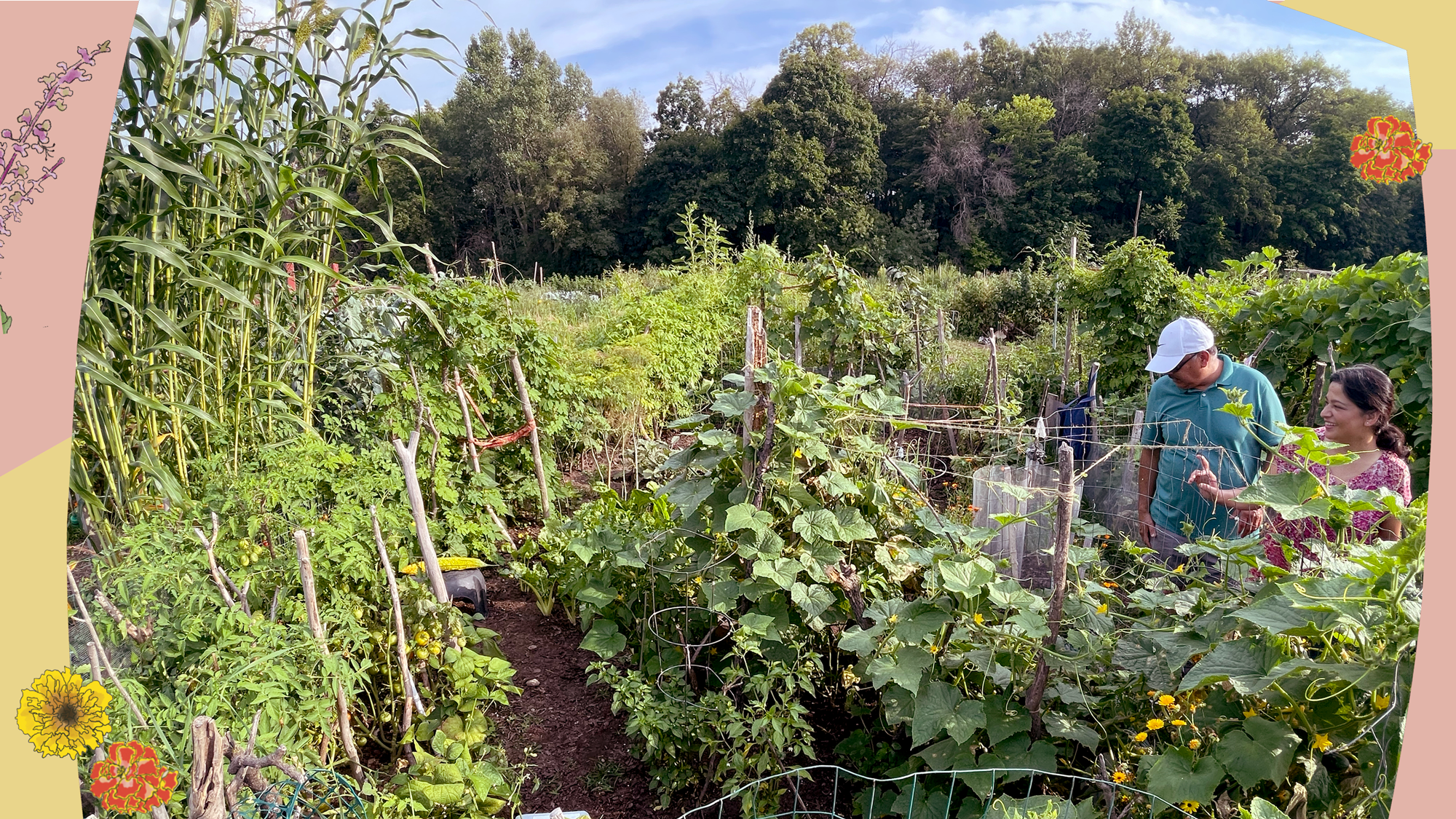
Late August in Tilak (left) and Lata’s (right) large plot at EHCG. Walkways are tight as crops reach full size – many of the plants are from seeds the duo save from year-to-year.
 Passport
Passport




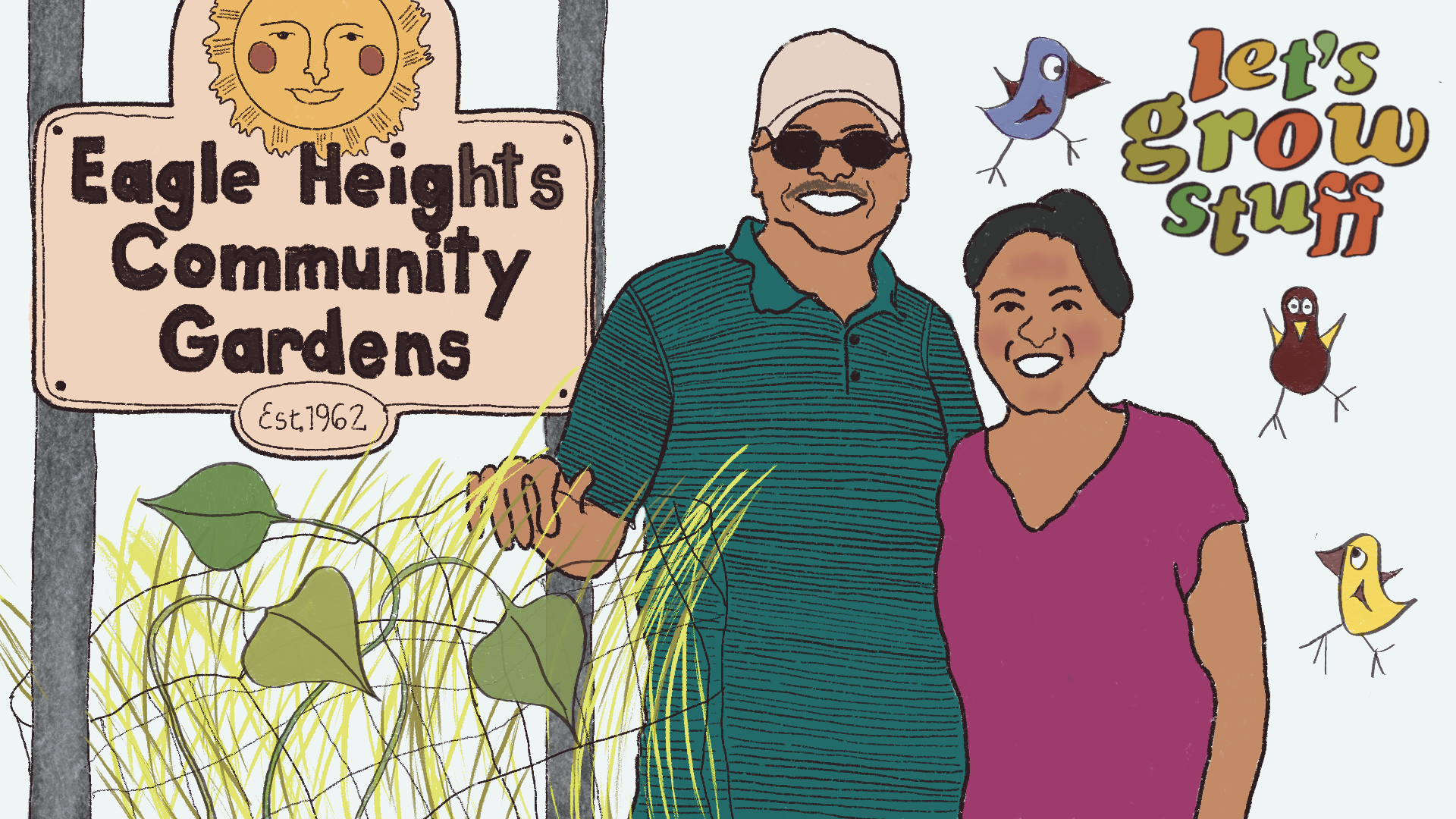

Nama says:
Beautiful article and wonderful images! I enjoyed reading this very much.